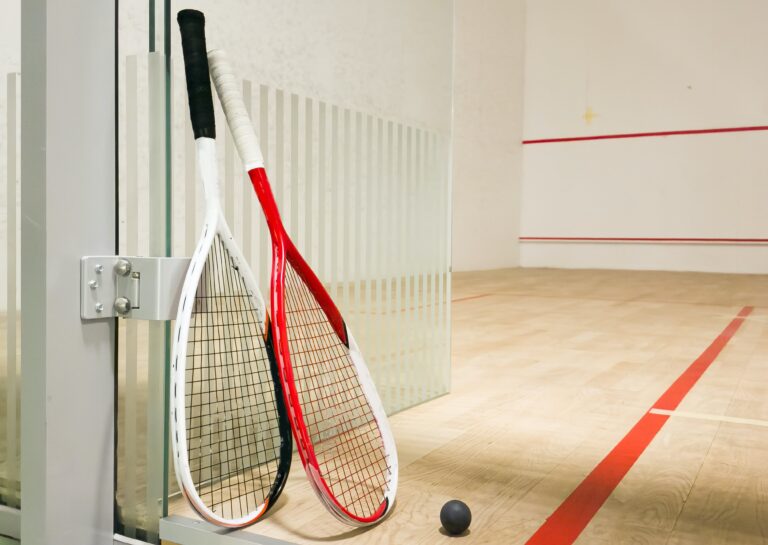The Ultimate Squash Fitness Guide: How to Boost Your Endurance & Agility
Posted by
on
Introduction
Squash is one of the most physically demanding sports, requiring a combination of endurance, agility, and strength. Players must be able to move quickly, change direction rapidly, and maintain energy levels throughout a match. In this guide, we’ll explore the best fitness exercises to help you build stamina, improve your agility, and enhance overall performance.
Building Endurance for Longer Matches
Squash matches can be exhausting, especially if they extend to multiple games. To improve your endurance:
- Cardio Training: Running, cycling, or swimming for at least 30 minutes, 3–4 times a week will help increase stamina.
- Interval Training: High-intensity interval training (HIIT) with short bursts of sprinting followed by active recovery simulates the quick bursts of movement in squash.
- Jump Rope Drills: Jumping rope improves cardiovascular endurance while enhancing foot coordination.
- Circuit Training: Combining strength and cardio workouts will prepare you for long, high-energy matches.
Enhancing Agility and Speed
Quick reflexes and agility are key in squash. Try these exercises:
- Ladder Drills: Use an agility ladder to improve foot speed and coordination.
- Cone Drills: Set up cones to practice quick changes in direction.
- Side-to-Side Drills: Move laterally in short bursts to mimic in-game movements.
- Plyometric Exercises: Box jumps and lateral hops improve explosive power and movement.
Strength Training for Squash Players
Strength training builds muscle endurance and power for more effective shots. Focus on:
- Leg Strength: Squats, lunges, and calf raises improve lower body power for fast movements.
- Core Stability: Planks, Russian twists, and medicine ball throws enhance balance and shot control.
- Upper Body Strength: Push-ups, pull-ups, and resistance band training increase arm strength for more powerful shots.
- Grip Strength: Strengthen your grip with wrist curls and forearm exercises for better racket control.
Recovery and Injury Prevention
Preventing injuries is just as important as improving fitness. Follow these tips:
- Stretch Before and After Playing: Stretching keeps muscles flexible and reduces the risk of strains.
- Hydrate Properly: Dehydration leads to fatigue, so drink enough water before and after matches.
- Get Enough Rest: Recovery days help prevent overuse injuries and improve overall performance.
- Wear Proper Footwear: Squash shoes with good grip and ankle support prevent slips and injuries.
Conclusion
A strong squash game isn’t just about skill—it’s about fitness too. By focusing on endurance, agility, strength, and injury prevention, you’ll perform better and enjoy the game longer. Start incorporating these exercises into your routine today! A well-conditioned player will always have an edge over opponents who neglect their fitness.



